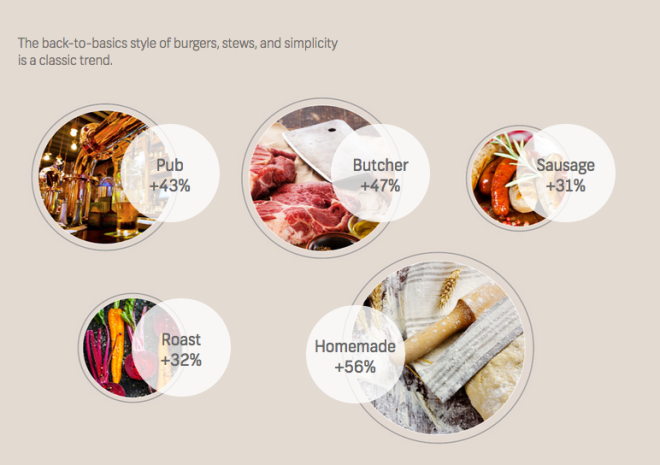Every few months I’ll see a new forecast of some emerging food trend. I don’t pay too much attention to these predictions — they’re often based on hunches and used to sell the trend. But stock-photo marketplace Shutterstock recently released a report that doesn’t attempt to look forward; instead, it released data reporting what type of food images people have been buying.
The trends speak to a yearning for simpler times: Purchases of food pictures tagged with the word “rustic” increased 101 percent. “Homemade” increased 56 percent. “Mason jars” increased 446 percent.
It’s worth noting that this tells us nothing about actual food trends. For that we’d need data from a Mason jar company. But it does tell us something about trends in culinary myth-making. It speaks to the references marketers are using — the images that they think will indicate quality and deliciousness. The actual food that people buy may not be homemade or rustic, but the images marketers are using to sell it certainly are.
As populations move away from farms and into cities, people have become alienated from the means of food production. Food that is made slowly, by hand, is not guaranteed to be good. But it is generally much more expensive, and therefore only shows up in places where people pay extraordinary attention to food. And of course, the nostalgia for Eden, for a half-remembered past that never truly existed, or for the childhood you wished you had, has always been a powerful selling tool.
Of course, what looks Edenic isn’t necessarily good for people or the planet. If only these marketing images always aligned with an honest effort to make more equitable and sustainable food.





